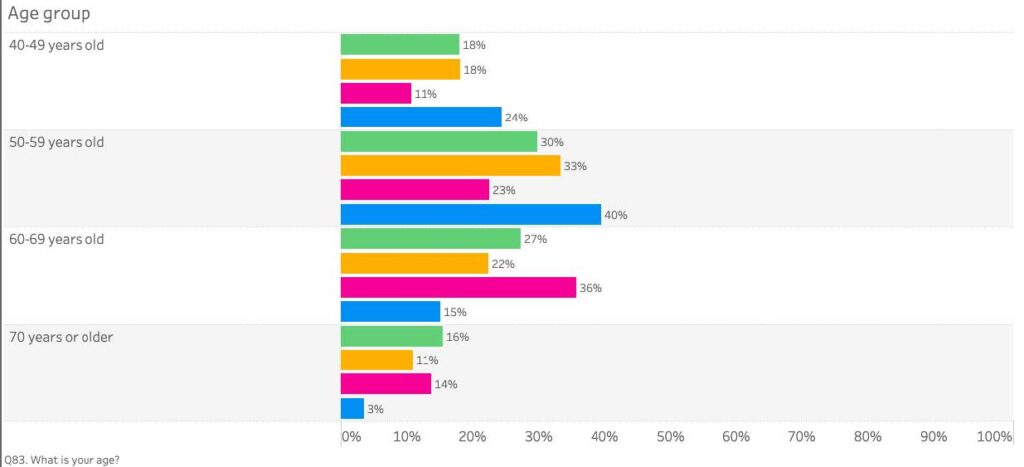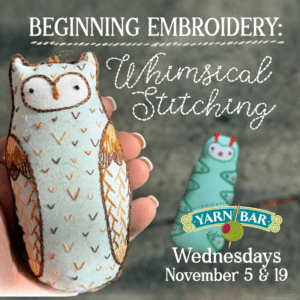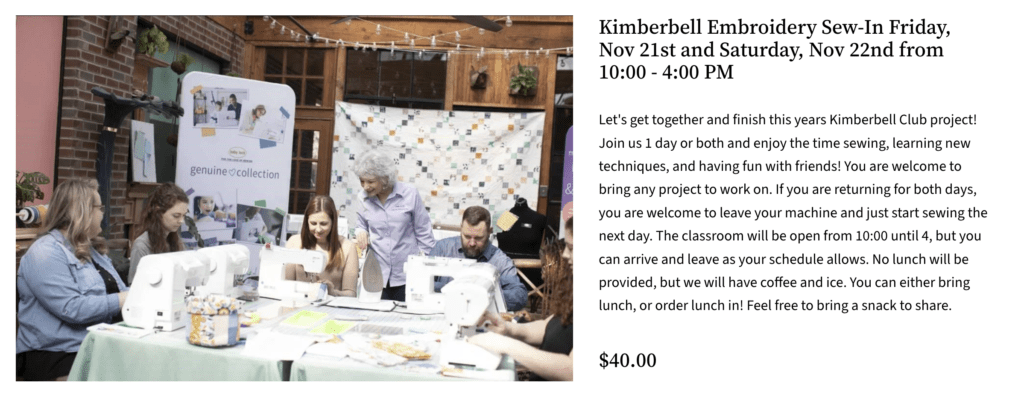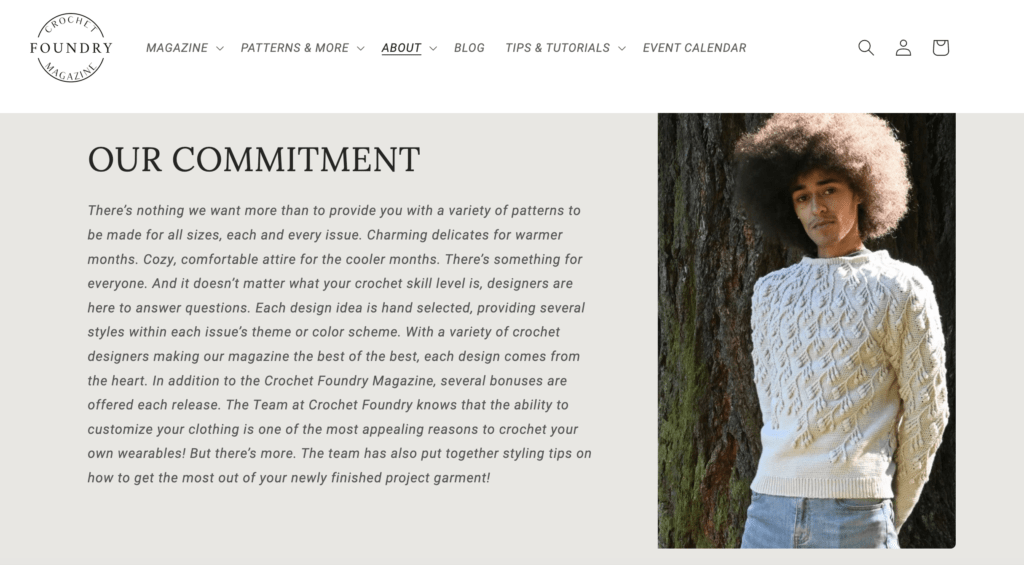18 Nov How To Combat Ageism To Create Friendly Crafting Spaces
Ageism has been described as “one of the last socially acceptable prejudices.” However, discussions around ageism often describe the bleak landscape older generations face when seeking employment or when confronted with a depressing array of anti-aging beauty products.
In crafting spaces, we see ageism working in the reverse. According to Stitchcraft Marketing’s Craft Retailer Survey, more than 2 out of 3 craft business owners are 50 years old or older. Our “Worried Willa” segment, which is more likely to be 60 years old or older, believes younger crafters are not interested in community involvement. However, all of our segments agree that more young crafters are entering the craft scene and asking for products or services that craft retailers don’t currently sell.

This tells us that the ageism issue in crafting spaces has more to do with not understanding the youth customer segment than it does with not being a friendly space for older generations. In fact, craft spaces, being largely owned by those 50 and older, may be more likely to create a space that is unwelcoming to younger crafters due to a lack of understanding about what younger crafters want, how they engage, and how to create a space that welcomes them.
Let’s talk about methods to combat ageism in our craft businesses and create a space that is welcoming to all crafters.
Follow Craft Influencers
A 2019 Statista analysis showed that 31% of Instagram influencers worldwide were between the ages of 18 and 24. This puts the influencer in the age bracket you’re trying to welcome into your space. Anecdotally, we know some craft influencers can skew slightly older, stretching from the 30s into the 40s. However, many of these influencers cater to a younger audience as well as their own age bracket.
Following craft influencers is a good place to start if you feel like your business isn’t friendly to younger generations. Unlike some other influencer spaces, where interest or use of a product is enough to qualify as an influencer, many craft influencers are also working their way into the industry via their own branded products and patterns. They have their own followers dedicated to their offerings.
By engaging with more craft influencers, you’re expanding your knowledge of products and patterns that you might not be selling in your store, because you aren’t aware of them yet! Young craft influencers can clue you into the latest craft trends and new patterns, tools, and materials that are driving shopping experiences for younger crafters. Develop a relationship with young craft influencers, and you can begin inviting them to your store for events, bringing their unique selling points into your store and enjoying the benefits of their dedicated audience.
Invest in New, Diverse Educational Offerings

The pandemic introduced so many people—young and old—to the crafting world. We saw an influx of new knitters, crocheters, embroiderers, quilters, sewists, ceramicists, potters, paper artists, resin makers, and more enter into crafting spaces for the first time.
While many craft retailers have reported slower sales since the height of the pandemic, that initial introduction to crafting has hooked many young people on the crafting habit. In addition, the pandemic launched a kind of cross-pollination effect in the crafting world. The “Groundhog Day Effect” of the pandemic, where each day felt largely the same as the day before, produced a desire in people to learn something new. If you were already a knitter before the pandemic, you may have picked quilting or embroidery or pottery during the pandemic. Learning a new skill helped break the curse of “same craft, different day.”
Offering classes on new techniques or different crafts invites both young and old crafters to learn something new, in a space that is welcoming to all beginners. The Yarn Bar in Kansas, which is largely focused on knitters, now routinely offers beginner courses in embroidery, loom weaving, and felting. Exploring a new craft levels the playing field, so that older and younger crafters can mingle in one space to learn together.
Host In-Store Crafting Mixers

One of the points on which all craft retailers agreed in our Craft Retailer Survey was that the older generation of crafters has a duty to pass on their skills and knowledge to the next generation of crafters. Anecdotally, we’ve heard from crafters (and experienced this ourselves as crafters!) that there’s no bigger turn off when entering a space than seeing a group of crafters huddled around a table with no room for someone new. The cliqueness isn’t clicking!
Try incorporating more crafting mixers into your store’s schedule. Thimbles Quilts in Illinois hosts monthly UFO sessions, inviting quilters to come in and finish their projects, and dedicated sew-ins like the one seen above, for Kimberbell. These events gather attendees at a low price point in an open classroom to finish projects, socialize, and lean on one another to figure out problems and get things done. The mood is always relaxed, open, friendly, and inviting for new and established customers.
Invest In Kits & Craft Supplies at Entry-Level Price Points
Younger crafters may not have as much disposable income to spend on craft supplies, but that does not mean they are not valuable as customers. Today’s thrifty crafter is tomorrow’s craft obsessive, and you’re investing in their future interest in your business when you provide them with reasonable options within their price range.
Offering kits and craft supplies at entry-level prices shows younger crafters that your craft business is friendly to beginners and all income levels.
Make Inclusivity Your Mantra
Engaging in an open, inclusive crafting environment is top of mind for many young crafters. And the topic of inclusivity covers several groups, as noted by Crochet Foundry’s statement above. Inclusivity extends to sizing, skill level, age, race, and gender. The moment you begin to approach your craft business from a place of inclusivity, you’ll begin to see ways in which your business may not be serving everyone equitably.
For example, do you offer sweater kits for knitters where the size range ends at a standard Large? If so, you’re leaving out a huge segment of knitters. Do you only sell kits to make quilts that are 68” or larger? Not all quilters can afford to make something that big—and not all quilters have the time to do so! Time is expensive for new parents who just want a little crafting break to relax.
We know that looking at your business from the perspective of all crafters seems like an impossible task. We’ve heard from craft retailers that they want to create stores that they want to shop in, which is understandable. But it neglects that you will have a much tougher time building and sustaining a business off of people just like you. Try to crowdsource your online audience via your newsletter, social media platforms, or online groups you host and ask them: what are we missing that you would love to see from our business? How can we better serve you? Which products, projects, classes, and events do you want to see from us? Their answers can help you build a better, stronger, more community-focused business.
Do you need help restructuring your marketing strategy to combat ageism in your craft business? Stitchcraft Marketing has expert content strategists to help you create a friendlier retail space for all crafters. Contact us today!





No Comments